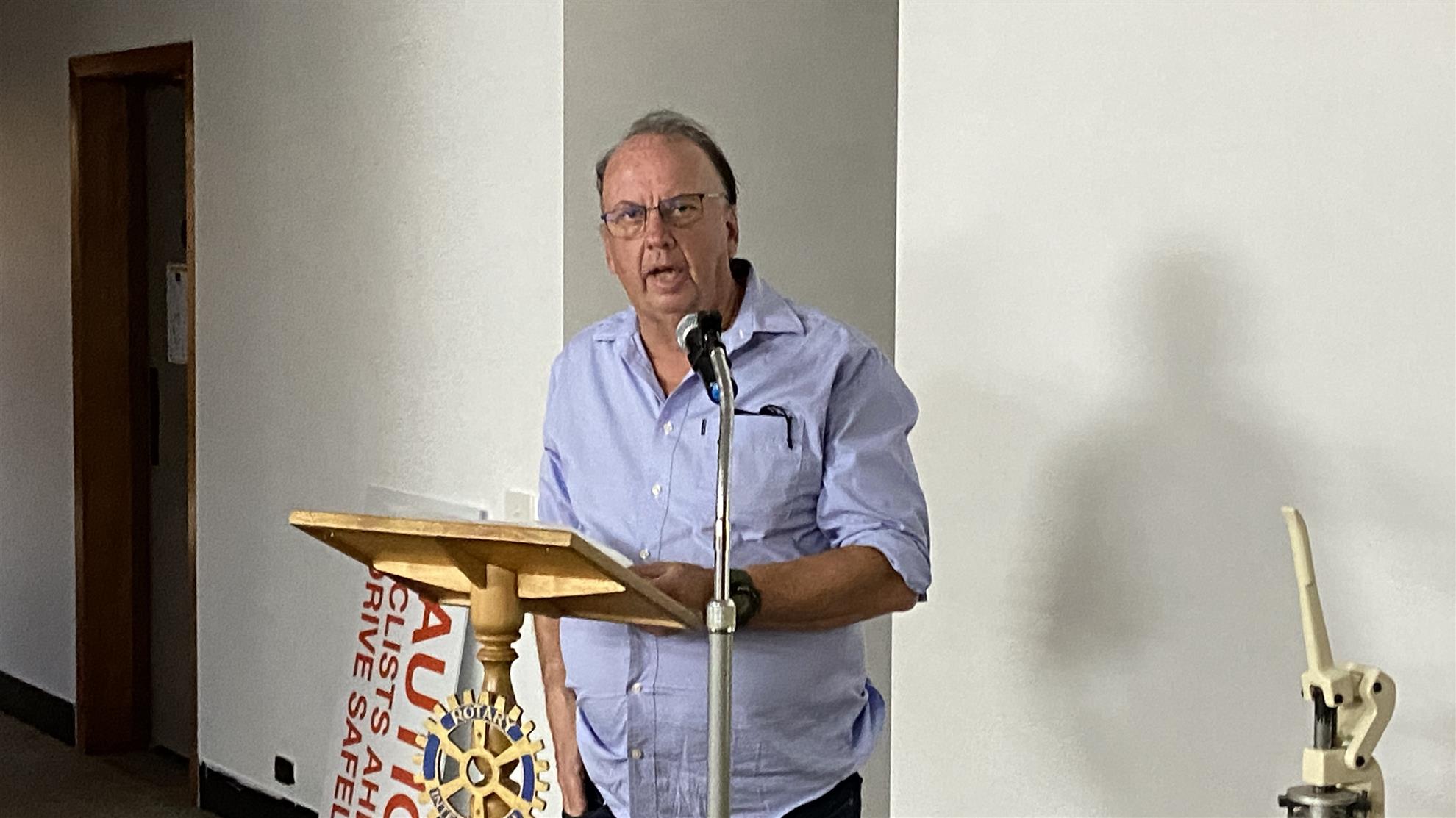 In what will be the first of many "Classification" 3-minute talks, Rotarian Max Berry shared how he currently sees his Rotary classification and how he came to adopt that understanding. All members are invited to participate in this 3-Minute Talk Series where you get a chance to describe how your employment shapes the way you do good in the world with Rotary. Please be ready to volunteer for one of the sessions which will feature in coming meetings. The complete text of Max's talk can be read by clicking "Read more..."
In what will be the first of many "Classification" 3-minute talks, Rotarian Max Berry shared how he currently sees his Rotary classification and how he came to adopt that understanding. All members are invited to participate in this 3-Minute Talk Series where you get a chance to describe how your employment shapes the way you do good in the world with Rotary. Please be ready to volunteer for one of the sessions which will feature in coming meetings. The complete text of Max's talk can be read by clicking "Read more..."My Career Classification: Public Relations (Max Berry).
Job titles in PR: publicist, communications and stakeholder relations adviser/officer/manager; media adviser/officer
What PR is not - journalism!
PR is not advertising: advertising is visibility, PR is credibility.
Journalists report objectively.
Publicists and communications specialists communicate key messages, engage, promote, raise
awareness using a variety of tools, including advertising. Nowadays social media, especially video is a
powerful public relations tool.
Media relations is part of PR: sending a media release to a newspaper is different to buying a paid
advertisement in that newspaper. Under media relations, the newspaper is under no obligation to
run a story based on a media release emailed by an organisation seeking publicity for its message. If
they do run a story, they can use it any way they see fit and can seek quotes from other voices. So, if
Political Party A sends a media release about the new train services it is running, the newspaper can
seek comment about that from Political Party B.
Advertising is different. The organisation is buying space in the newspaper. Provided it is legal, the
newspaper accepting payment for the ad must run the ad to the exact wording and specifications it has been given by the organization of business that is paying for the space. The newspaper will normally seek the organisation's approval for the ad before publication.
PR professionals identify the key messages that their organisation wishes to convey to their publics -
customers, shareholders, viewers, readers, voters, or audiences.
The key messages that an organisation like a state government would seek to convey about moving
more freight by rail are:
· A safer way to move freight - fewer train accidents than road accidents
· Less damage to local roads - one grain train can replace 80 trucks
· More fuel efficient - the same tonnage of freight can be moved using one quarter the fuel
needed by the equivalent truck fleet
· Equivalent reduction in emissions - cleaner air and more climate friendly.
Key messages for Murray Basin Rail Project in particular:
· Increase in weekly train paths from 28 to 49
· Journey time reduction of one hour from Marvborough to Ararat of one hour by increasing
train speed to 65 kmh.
· More resilience and flexibility by allowing more train stabling and crossing points.
· Sustainable practices such as recycled plastic sleepers made from old vine covers at Merbein
and Donald sidings.